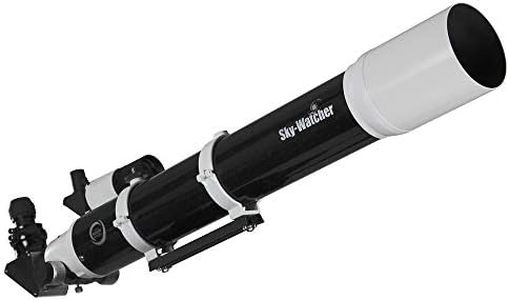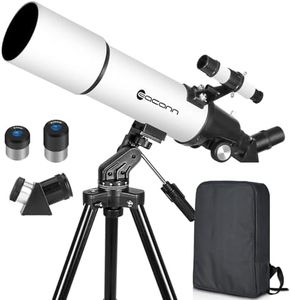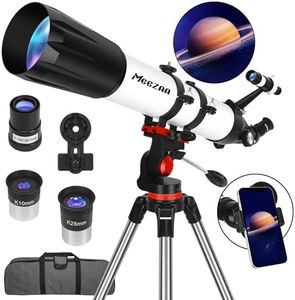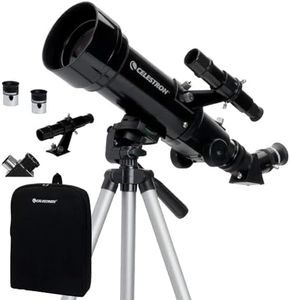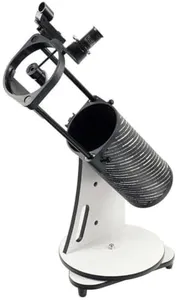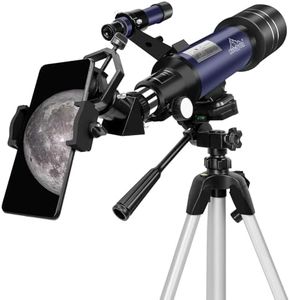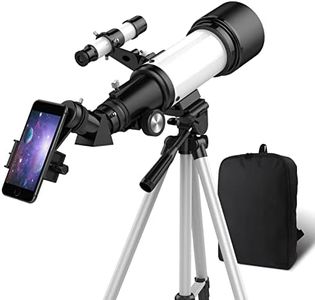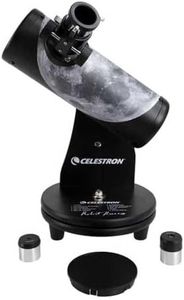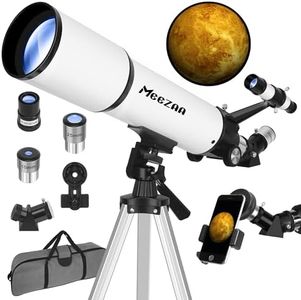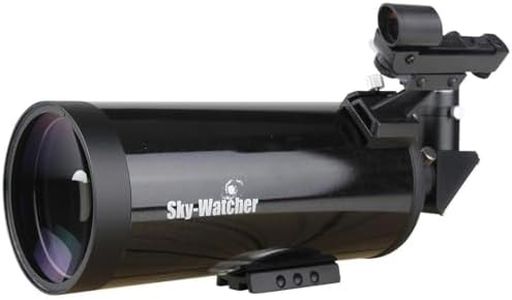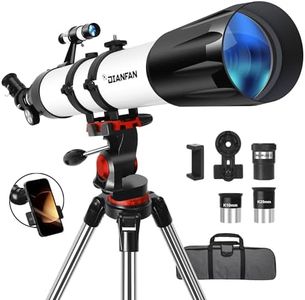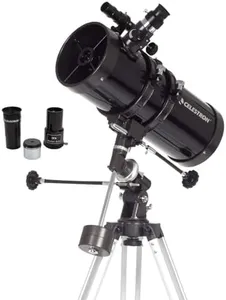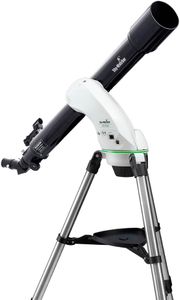We Use CookiesWe use cookies to enhance the security, performance,
functionality and for analytical and promotional activities. By continuing to browse this site you
are agreeing to our privacy policy
10 Best Telescopes Telescopes For Beginners
From leading brands and best sellers available on the web.Buying Guide for the Best Telescopes Telescopes For Beginners
Choosing a telescope as a beginner can be exciting but also a bit overwhelming. The right telescope opens the door to exploring the night sky and discovering planets, stars, and galaxies. The most important thing to remember is that the best telescope for you is one that is easy to use, suitable for your observing environment, and matches your interests in astronomy. Understanding the key features can help you pick a telescope that will encourage regular use and make your early experiences satisfying and fun.ApertureAperture refers to the diameter of the telescope's main lens or mirror, and it's the single most important feature because it determines how much light the telescope can collect. The more light it gathers, the fainter and farther objects you can see. Telescopes are often grouped by small apertures (under 70mm), medium apertures (70-130mm), and large apertures (over 130mm). For beginners, a medium aperture is ideal as it offers a good balance between portability, ease of use, and viewing power. If your main interest is observing bright objects like the Moon and major planets, a smaller to medium aperture is sufficient. If you wish to explore deep-sky objects like galaxies and nebulae from dark locations, a larger aperture improves your viewing.
Focal LengthThe focal length is the distance from the main lens or mirror to the point where the image comes into focus. It affects the magnification and field of view. Short focal lengths (up to 700mm) provide wider views, making them better for star clusters and broader patches of sky, while long focal lengths (over 900mm) give higher magnification for planets and small objects. For beginners, a telescope with a moderate focal length gives flexibility for multiple types of observing. Your main interests—whether in wide, panoramic views or zoomed-in planetary detail—should guide your choice here.
Mount TypeThe mount is the part of the telescope that holds it steady and allows it to point to different parts of the sky. There are two main types: alt-azimuth, which moves up/down and left/right, and equatorial, which is designed for tracking stars as they move. Alt-azimuth mounts are simpler and generally better for beginners due to their straightforward operation. Equatorial mounts are more complex but helpful if you want to try astrophotography. For general skywatching, ease of use is key, so beginners usually do best with a solid, alt-azimuth mount.
Optical DesignTelescopes come in three basic optical designs: refractor, reflector, and compound. Refractors use lenses and are known for sharp images, especially of the Moon and planets, and are low maintenance. Reflectors use mirrors, and they typically offer more aperture for your investment, making them better for faint deep-sky objects, but they need occasional adjustments (collimation). Compound telescopes are a mix of both, offering versatility and compactness. As a beginner, if you prefer simple and sturdy, a refractor is a good pick, while reflectors offer greater light-gathering power for more ambitious observing.
PortabilityPortability refers to how easy it is to move and set up your telescope. Telescopes come in various sizes and weights—some are very light and compact, while others are heavy and bulky. If you need to carry your telescope to a park or other dark-sky site, prioritize a model that's easy to transport and assemble. If it will remain at home, size and weight might matter less. Your home environment, storage space, and how far you want to travel with your telescope should guide your choice.
Ease of UseEase of use covers everything from how simple it is to set up the telescope to how easily it helps you find and track celestial objects. Some telescopes come with features like red-dot finders, star maps, or even motorized tracking for extra help. As a beginner, it's wise to pick a telescope with clear instructions, intuitive controls, and helpful guides for finding objects. The more user-friendly the telescope, the more likely you are to use it often and enjoy the experience.
